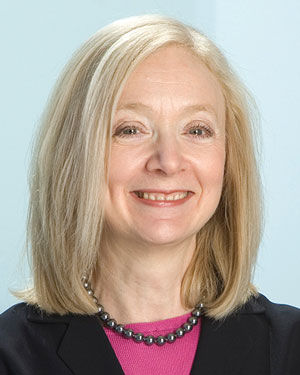Lecturer evokes awkward teen years in segregated Memphis
Published March 23, 2016
It’s often shocking to see a long-ago acquaintance for the first time in decades. First you think, “Wow, they’ve really aged.” Then you realize that you have, too. But what’s really startling is when you recognize that certain things haven’t really changed that much at all. You’ve beamed into a “Star Trek” episode and are catapulted back in time.
My most recent “Star Trek” incident happened last month at the St. Louis County Library’s “Meet the Author” program featuring Alan Lightman. Although the event focused on “Screening Room,” Lightman’s memoir of growing up in Memphis, Tenn., he is also a famous physicist, a professor of the practice of the humanities at the Massachusetts Institute of Technology, and an author of numerous other books including the bestselling “Einstein’s Dreams,” which has been translated into at least 30 languages.
What could I, a simpleton when it comes to science, possibly have in common with a famous physicist? Well, we were both Jewish kids growing up in Memphis during the 1950s and 1960s. In addition, Lightman was good friends with my big brother Bob, who inherited all of the math brains in my family. The three of us attended White Station High School, where my brother and Lightman got to know each other through science classes and as debate team members.
It was in those days that we came of age in a segregated city, and the bigotry we witnessed then played a part in why all three of us decided to leave.
I hadn’t seen Lightman for years, but I can remember meeting him through Bob when I was an awkward, tongue-tied tween. Three years my senior, he was brilliant and handsome. I was totally awestruck, and that was even before I knew that his grandfather was M.A. Lightman, founder of the Malco movie theater chain.
But what I really recall about Lightman is how he seemed totally unaffected by his looks, brains and family background. Instead, he was sweet and kind, a real Southern gentleman – a mensch – to Bobby Appleson’s gawky little sister.
And that’s exactly what came to mind as Lightman strode up to the podium. A lot has happened since the 1960s. He’s acquired a résumé that’s encyclopedic in length, filled with a long list of accomplishments and awards. Yet there he stood – yes, a bit older – but still the same unassuming striking man I remembered from my youth.
In that same down-to-earth way he had at age 16, Lightman captivated the audience, taking us all back with him in time.
One of the incidents he recalled took place in 1960, when he was 11. Lightman boarded a bus to go downtown. Because there were no seats in the front, he sat down in the back. The driver reacted by pulling over and stopping the bus. He approached Lightman and told him he was sitting in the “colored” section and would have to move. Confused, Lightman replied, “But there aren’t any seats up there.”
The driver refused to budge until one of the white passengers in the front got up and sat on the lap of another white rider, creating a seat for the boy.
“Brown v. Board of Education had done nothing to stop the craziness in Memphis,” Lightman wrote in his book. “Blacks and whites not only had separate schools. They had separate toilet facilities, separate drinking fountains, separate lunch counters in the department stores. Blacks and whites were not allowed to visit the Memphis Zoo on the same day.”
The bigotry was appalling. Our reaction to it was among the reasons Lightman, my brother and I were all drawn to the same speech and drama teacher in high school. Gene Crain was a wonderful man whose patient instruction included helping us overcome our Southern accents.
“You beasts will never make it to the stage talking like Southern rednecks,” Lightman quoted Crain as saying.
While my dream might not have been the stage, losing my southern accent was part of my ticket out of Memphis. I wanted to be a journalist and knew that no one would take seriously a blond-haired, blue-eye girl with such a thick drawl.
And so Crain spent hours with each of us trying, as Lightman put it, “to exterminate” our flat Southern I’s so that they would sound like “eye” instead of “ah.” To this day, it’s the most challenging part of my speech, and it resurfaces when I’m tired, have had too much to drink and, strangely enough, in my Hebrew.
The funny thing is that I could still hear that soft I in Lightman’s voice, too, and couldn’t wait to tell him when he signed books after his reading.
When my turn came, I eagerly told him who I was. He stood up and took my hand. Suddenly the words got stuck in my mouth and my cheeks flushed red. It was that old familiar feeling of being awkward and tongue-tied.
But it was exhilarating, too. In those special minutes, I felt that rush of being Bobby Appleson’s 13-year-old little sister once again.















